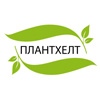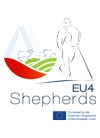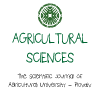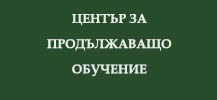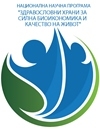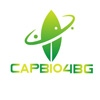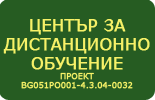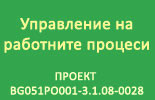Irrigation and drainage
|
Course title: |
Irrigation and drainage |
|
|
Course code: |
LGIDR |
|
|
ECTS: |
5 |
|
|
In-class hours |
Lectures: |
30 |
|
Laboratory work/Tutorials: |
30 |
|
|
Self-preparation hours |
Practical training: |
- |
|
Other: |
65 |
|
|
Total hours: |
125 |
|
|
Language: |
English |
|
|
Study cycle: |
Bachelor |
|
|
Semester: |
Winter |
|
|
Faculty: |
Faculty of Horticulture and Viticulture |
|
|
Name of the lecturer(s): |
Assoc. Prof. Eng. Rositsa Meranzova, PhD |
|
|
Mode of delivery: |
Face-to-face, distance learning |
|
|
Prerequisites: |
no |
|
|
Learning outcomes of the course unit: |
Irrigation and Drainage course is taught to provide knowledge and skills of students at bachelor level for organizing, forecasting and management of irrigation activities in the cultivation of agricultural crops in conditions of drought and waterlogging. The selection and application of irrigation equipment is directly connected to the implementation of all agricultural activities, related with agrotechnical, soil cultivation and mechanization of production, proper operations ensure quality and high yield production. It has been studied the laws of movement of water on the soil surface and within it, water-physical soil properties and their relationship with irrigation application of crops, the advantages and disadvantages of irrigation techniques: surface irrigation, sprinkler irrigation and drip irrigation. The students will also study the basic processes associated with the reclamation of waterlogged land - drainage for external and internal waters. The material gives the basic patterns of the drainage system specification and design of surface drainage channels and subsurface perforated drainage tubes on farmlands. |
|
|
Course contents: |
1. The essence and the objectives of irrigation and drainage in agricultural lands. A short historical review. 2. A brief survey of hydrology. The water circle in nature. The basic characteristics of the rivers. 3. The water balance of the river runoff. The high level of the water in the river’s bed. The solid (sediment) river’s runoff. 4. The precipitation and its characteristics. Processing methods of statistical data – empirical and theoretical curves of the probability distribution of the precipitation. 5. The basic characteristics of the fluids. Hydrostatic (water) pressure. Hydraulic pressure and equipment for its measurement. 6. Water movement in open channels and pipes – basic characteristics of the steam. Basic equations of hydrodynamics. Hydraulic and piezometric slopes. 7. Head loss by the water movement. The formula for the velocity v (m/s) of the water and discharge Q (m3 /s). 8. The flow measurements – weirs, orifices, and siphons. 9. Design of open channels. Definitions – wetted perimeter, area of cross-section, hydraulic radius, hydraulic slope. Method of estimating the amount of channels. 10. Physical properties of the soil, soil moisture and its relationships and measurement. Soil moisture constants – saturation capacity, field capacity, permanent wilting point, available water. Tensiometers. 11. Kinds of soil water –hygroscopic water, capillary water, gravitational water. Movement of water into the soil. Water intake and percolation during irrigation. 12. Plant-water relationships. Types of irrigation regimes (schemes). Water balance equation for the active layer. 13. Optimum, minimum and maximum soil moisture. Effective root zone depth of some common crops: alfalfa, cotton, maize, cereals, vegetables, orchards and vineyards. 14. Determination of the income of precipitation, increasing of the roots, and ground water. Formula of net and gross irrigation rate (requirement) during the single irrigation and all the season. 15. Methods of estimation of the evapotranspiration (ET): water balance, lysimeter, and estimating reference evapotranspiration from climatologically data. 16. Calculation of the irrigation regime of a crop. Graphical plotting during the growing season. 17. Different methods for irrigation in the field. Surface irrigation – border-strip flooding, furrow irrigation, and basin flooding. Basic parameters, hydraulics of surface irrigation – discharge, time of irrigation and length of border or furrow. Design of surface irrigation systems. Irrigation implements. 18. Sprinkler irrigation. Advantages and disadvantages for different crops. Other uses of sprinkler systems. Types of sprinklers. Technical definitions-nozzle diameter, pressure, discharge, diameter coverage, spacing, and precipitation. 19. Types of sprinkler systems. Hand-move lateral, center pivot, hose-fed traveling gun-type sprinkler, linear move lateral, perforated pipe. Operation and design requirements. 20. Drip irrigation. Advantages and disadvantages for different crops. Potential problems of drip (trickle) irrigation. Basic elements of the drip system – drippers (emitters), laterals, valves, sub mains, main line, filters, fertilizer tank and water resource. Type of filters. 21. Design of drip irrigation systems. General considerations. Soil and water salinity. 22. Drainage systems in irrigated lands. Advantages and disadvantages of surface drainage channels and subsurface perforated drainage tubes. 23. Maintenance in irrigated lands, canal layout, seepage of the canals and their restrictions. 24. Combined irrigation and drainage systems. |
|
|
Recommended or required reading: |
1. Benami A., A.Ofen, Irrigation Engineering,Haifa, Israel,1984 2. Finkel H. Handbook of Irrigation technology, CRC Press and others, 1982. 3. Irrigation and Drainage Papers of FAO, Rome, no 24, 46, 56. 4. Keller J., R.Briesner, Sprinkler and Trickle Irrigation, An Avi Book, 1990. 5. Nakayama F.S. and D.A.Bucks, Trickle Irrigation for Crop Production-Design, Operation and Management, Elsevier 1986. 6. Prospects of the irrigation firms: Netafim, NAAN, Dan, Rain Bird, Toro et al; 7. Lectures of the University Teacher. |
|
|
Planned learning activities and teaching methods: |
Lecture, exercises, discussion and conversation |
|
|
Assessment methods and criteria: |
Project work evaluation and oral exam |
|
 - Events on the occasion of the 80th anniversary of AU
- Events on the occasion of the 80th anniversary of AU
